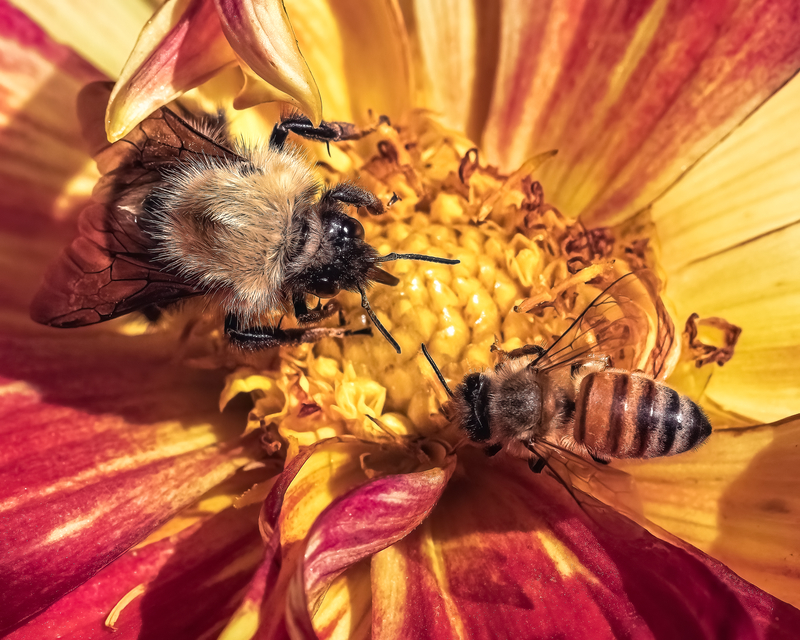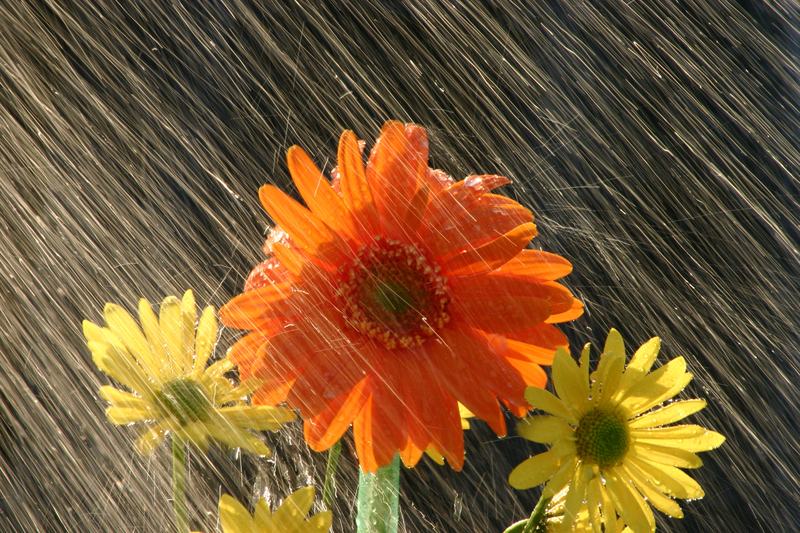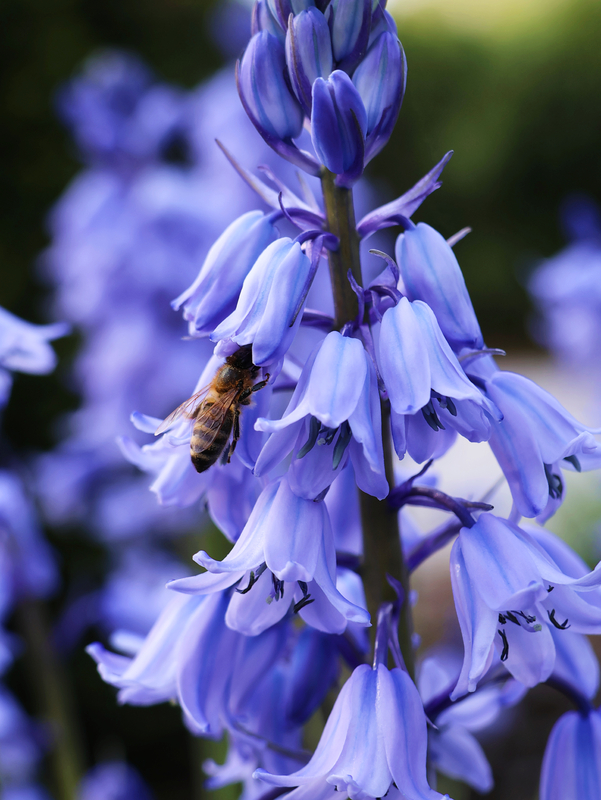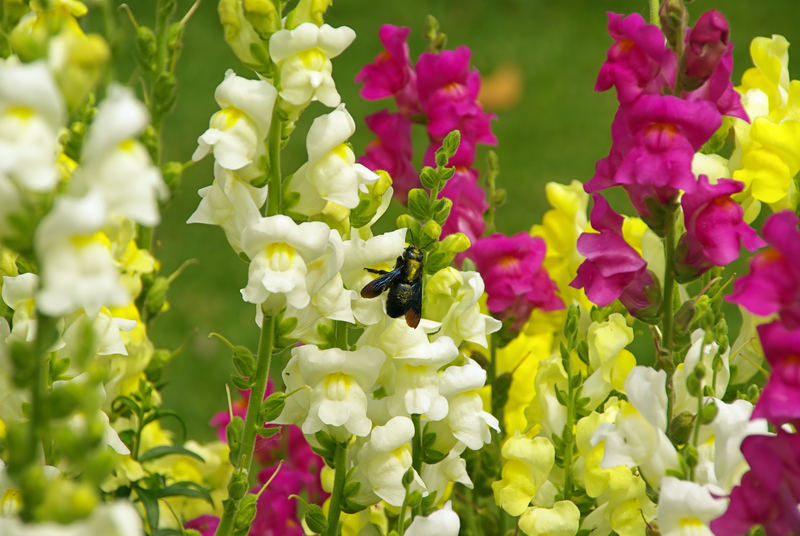A question came up at lunch the other day that I have been pondering ever since. Brynn, one of the designers at Embassy, was asked for a very specific landscape planting. The client wanted yellow flowers that did not attract1.jpg) bees and wasps. I have to admit that my first reaction was disbelief that anyone in this day and age wouldn’t want pollinators visiting their garden. After all, bees and wasps are a signal that a garden is healthy and that the ecosystem is in balance. Perhaps, I thought, she just needed some information.
bees and wasps. I have to admit that my first reaction was disbelief that anyone in this day and age wouldn’t want pollinators visiting their garden. After all, bees and wasps are a signal that a garden is healthy and that the ecosystem is in balance. Perhaps, I thought, she just needed some information.
In the next breath Brynn explained that the customer was highly allergic to bee and wasp stings. That immediately put everything in perspective. Of course health issues would be foremost in the client’s mind. The problem then was figuring out how to satisfy the client’s desire for yellow flowers without attracting bees and wasps.
Simply googling flowers that don’t attract bees and wasps brought up several lists of possibilities. Unfortunately the lists seemed to contradict one another. (In my experience, that’s pretty typical of internet “experts.”). After a few minutes it occurred to me that the place to begin solving this conundrum was working backwards. First you had to know which flower characteristics attracted bees and wasps. Then you could use that information to find flowers that didn’t have them. Simple, right?
Of course not.
Say the word bee and a vast majority of people visualize either a western honey bee (Apis mellifera) or a big, fuzzy black and gold bumble bee(Bombus spp.).  While both types are common across the United States, there are over 4,000 additional bee species found across our country. They all have the ability to sting or bite, but the degree to which they can penetrate human skin varies, which means that stings can range from extremely painful to a mild annoyance. Although any of the 4000 species have the potential of causing allergic reactions, the challenge of avoiding bee stings is much more complex.
While both types are common across the United States, there are over 4,000 additional bee species found across our country. They all have the ability to sting or bite, but the degree to which they can penetrate human skin varies, which means that stings can range from extremely painful to a mild annoyance. Although any of the 4000 species have the potential of causing allergic reactions, the challenge of avoiding bee stings is much more complex.
An individual who is allergic to a specific species, the western honey bee for example, may or may not be allergic to the sting of other bees. To confuse the issue even further, the severity of allergic reactions can vary by season. The make-up of insect venom can differ by the number, type and amount of enzymes it contains, which is directly tied to the nutrients in the insect’s diet.  The nutrient levels vary not only by which plants are available to feed on, but also by climate factors like temperature and rainfall.
The nutrient levels vary not only by which plants are available to feed on, but also by climate factors like temperature and rainfall.
Once an individual identifies which bee, or bees, to avoid, then the hunt for “safe” flowers can begin. Some recent research from Penn State offered new insights into bee/human interactions. One of the major points it revealed was that different species of bees are attracted to different floral characteristics. Several types  of bees show a preference for blooms with a high number of racemes, or “a group of flowers on a plant that are attached to a central stem by short stalks.” Others avoid them. The study also showed that bloom color is not necessarily a defining factor in attracting bees.
of bees show a preference for blooms with a high number of racemes, or “a group of flowers on a plant that are attached to a central stem by short stalks.” Others avoid them. The study also showed that bloom color is not necessarily a defining factor in attracting bees.
Researchers have known for quite a while that bees see colors and shapes differently than humans do. They cannot see the color red (it appears as an unappealing black to them), but they can see the ultraviolet spectrum, which we cannot. They can see edges well because they easily tell the difference between dark and light. They cannot however, easily distinguish shapes with similar outlines like ovals and circles. Honey bees are less attracted by color than are bumble bees. While yellow is often associated with attracting bees, blues and purples are more attractive to bees than yellow.
Highly fragrant flowers are often thought to be bee magnets, but that is only partially true. While scent does attract bees, it only works if they are already in close range. A bee’s sense of sight is actually much stronger than its sense of smell. Planting low fragrance or fragrance free flowers like sunflowers, dahlias and hibiscus can help to reduce the local bee population. Choose those varieties in colors that bees can’t distinguish to attract even fewer bees.
its sense of smell. Planting low fragrance or fragrance free flowers like sunflowers, dahlias and hibiscus can help to reduce the local bee population. Choose those varieties in colors that bees can’t distinguish to attract even fewer bees.
A combination of both pollen and nectar is essential for bees, so they instinctively head for flowers that supply a healthy dose of each. They tend to avoid snapdragons, cosmos, asters, lupines and zinnias because of their relatively low pollen counts. Adding groups of low nectar plants like begonia, petunias, marigolds and geraniums will also discourage bees from visiting the garden.
Protecting yourself from the very real dangers of allergic reactions to bee stings can be a challenge. It doesn’t mean however, that a beautiful, blooming garden is out of the question. With today’s research, it’s possible to choose plantings that are both safe and beautiful.
